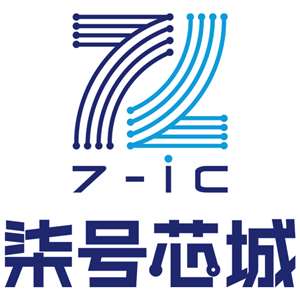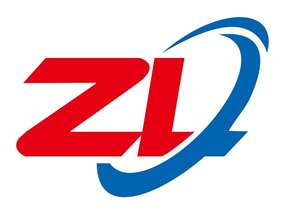AD9752
The second method may be used in a dual-supply system in
which the common-mode voltage of REFIO is fixed and IREF is
varied by an external voltage, VGC, applied to RSET via an ampli-
fier. An example of this method is shown in Figure 21, in which
the internal reference is used to set the common-mode voltage
of the control amplifier to 1.20 V. The external voltage, VGC, is
referenced to ACOM and should not exceed 1.2 V. The value
of RSET is such that IREFMAX and IREFMIN do not exceed 62.5 µA
and 625 µA, respectively. The associated equations in Figure 21
IOUTA and IOUTB also have a negative and positive voltage
compliance range. The negative output compliance range of
–1.0 V is set by the breakdown limits of the CMOS process.
Operation beyond this maximum limit may result in a break-
down of the output stage and affect the reliability of the AD9752.
The positive output compliance range is slightly dependent on
the full-scale output current, IOUTFS. It degrades slightly from its
nominal 1.25 V for an IOUTFS = 20 mA to 1.00 V for an IOUTFS
2 mA. Operation beyond the positive compliance range will
=
can be used to determine the value of RSET
.
induce clipping of the output signal which severely degrades
the AD9752’s linearity and distortion performance.
AVDD
For applications requiring the optimum dc linearity, IOUTA
and/or IOUTB should be maintained at a virtual ground via an
I-V op amp configuration. Maintaining IOUTA and/or IOUTB
at a virtual ground keeps the output impedance of the AD9752
fixed, significantly reducing its effect on linearity. However,
it does not necessarily lead to the optimum distortion perfor-
mance due to limitations of the I-V op amp. Note that the
INL/DNL specifications for the AD9752 are measured in
this manner using IOUTA. In addition, these dc linearity
specifications remain virtually unaffected over the specified
power supply range of 4.5 V to 5.5 V.
AVDD
REFLO
+1.2V REF
REFIO
150pF
CURRENT
SOURCE
ARRAY
FS ADJ
1F
R
SET
I
REF
AD9752
I
= (1.2–V )/R
GC SET
REF
V
GC
WITH V < V
GC REFIO
AND 62.5A Յ I
Յ 625A
REF
Figure 21. Dual-Supply Gain Control Circuit
ANALOG OUTPUTS
The AD9752 produces two complementary current outputs,
IOUTA and IOUTB, which may be configured for single-end
or differential operation. IOUTA and IOUTB can be converted
into complementary single-ended voltage outputs, VOUTA and
Operating the AD9752 with reduced voltage output swings at
IOUTA and IOUTB in a differential or single-ended output
configuration reduces the signal dependency of its output
impedance thus enhancing distortion performance. Although
the voltage compliance range of IOUTA and IOUTB extends
from –1.0 V to +1.25 V, optimum distortion performance is
achieved when the maximum full-scale signal at IOUTA and
IOUTB does not exceed approximately 0.5 V. A properly se-
lected transformer with a grounded center-tap will allow the
AD9752 to provide the required power and voltage levels to
different loads while maintaining reduced voltage swings at
IOUTA and IOUTB. DC-coupled applications requiring a
differential or single-ended output configuration should size
RLOAD accordingly. Refer to Applying the AD9752 section for
examples of various output configurations.
V
OUTB, via a load resistor, RLOAD, as described in the DAC
Transfer Function section by Equations 5 through 8. The
differential voltage, VDIFF, existing between VOUTA and VOUTB
can also be converted to a single-ended voltage via a transformer
or differential amplifier configuration.
Figure 22 shows the equivalent analog output circuit of the
AD9752 consisting of a parallel combination of PMOS differen-
tial current switches associated with each segmented current
source. The output impedance of IOUTA and IOUTB is deter-
mined by the equivalent parallel combination of the PMOS
switches and is typically 100 kΩ in parallel with 5 pF. Due to
the nature of a PMOS device, the output impedance is also
slightly dependent on the output voltage (i.e., VOUTA and VOUTB
and, to a lesser extent, the analog supply voltage, AVDD, and
full-scale current, IOUTFS. Although the output impedance’s
The most significant improvement in the AD9752’s distortion
and noise performance is realized using a differential output
configuration. The common-mode error sources of both
IOUTA and IOUTB can be substantially reduced by the
common-mode rejection of a transformer or differential am-
plifier. These common-mode error sources include even-
order distortion products and noise. The enhancement in
distortion performance becomes more significant as the recon-
structed waveform’s frequency content increases and/or its
amplitude decreases.
)
signal dependency can be a source of dc nonlinearity and ac linear-
ity (i.e., distortion), its effects can be limited if certain precau-
tions are noted.
AVDD
The distortion and noise performance of the AD9752 is also
slightly dependent on the analog and digital supply as well as the
full-scale current setting, IOUTFS. Operating the analog supply at
5.0 V ensures maximum headroom for its internal PMOS current
sources and differential switches leading to improved distortion
performance. Although IOUTFS can be set between 2 mA and
20 mA, selecting an IOUTFS of 20 mA will provide the best dis-
tortion and noise performance also shown in Figure 8. The
noise performance of the AD9752 is affected by the digital sup-
ply (DVDD), output frequency, and increases with increasing
clock rate as shown in Figure 11. Operating the AD9752 with
low voltage logic levels between 3 V and 3.3 V will slightly re-
duce the amount of on-chip digital noise.
IOUTA
IOUTB
R
R
LOAD
LOAD
Figure 22. Equivalent Analog Output
REV. 0
–11–







![]()
![]()

![]()
![]()

![]()
